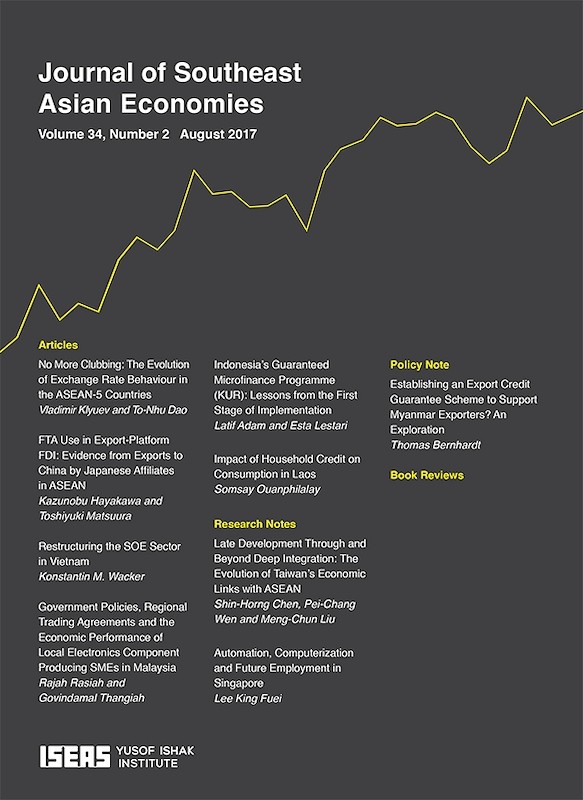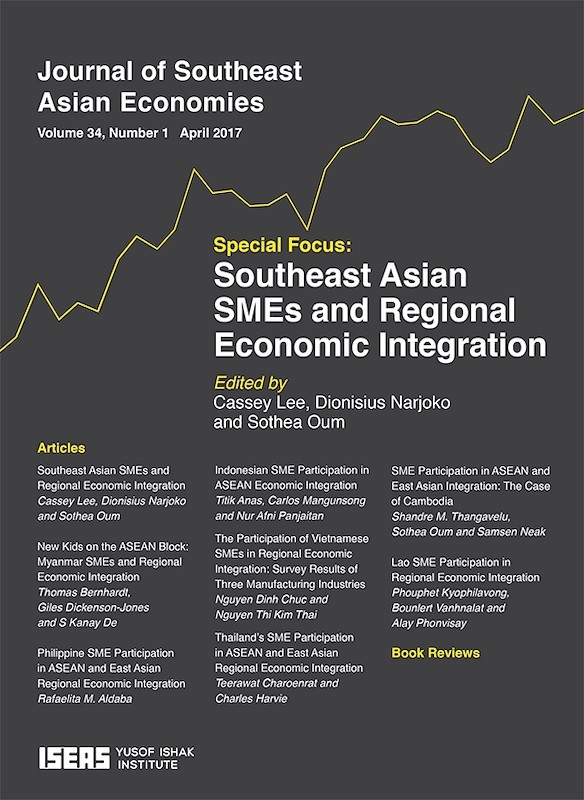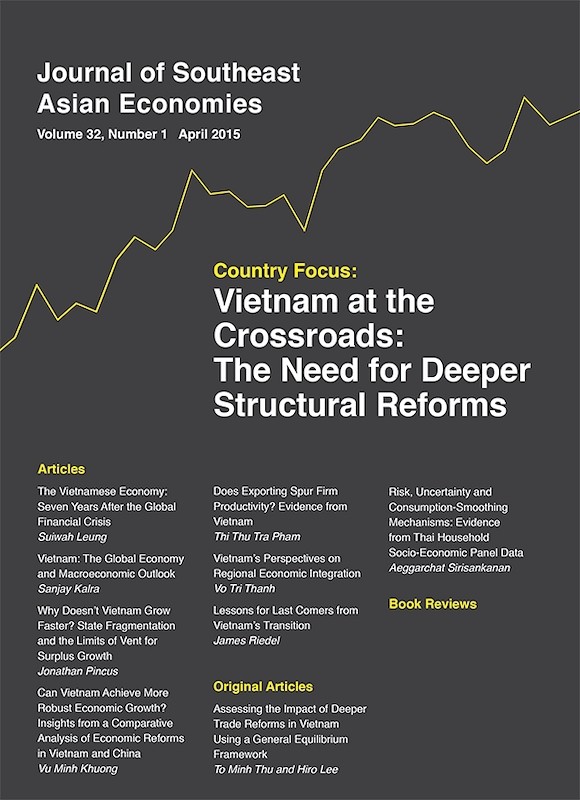ASEAN Economic Bulletin Vol. 21/3 (Dec 2004)

Date of publication:
January 2005
Number of pages:
84
Code:
AE21/3
Contents
-
ASEAN Economic Bulletin Vol. 21/3 (Dec 2004)
-
Preliminary pages
- ARTICLES
-
The European Market for ASEAN Agricultural Exports: Estimates of Income and Price Elasticities, by Jyrki Niemi, author see abstractThis article provides new evidence on income and price elasticities of demand for agricultural exports from ASEAN countries. Econometric models are constructed for seven agricultural commodities -- cassava, cocoa, coconut oil, palm oil, pepper, rubber, and tea -- exported from ASEAN to the EU. A modelling approach based on the error correction mechanism is used in order to emphasize the importance of the dynamics of trade functions. The results indicate that there is a relatively weak demand response to income and price changes in the EU. However, the results also suggest that relative-price variations affect significantly the demand for ASEAN commodity exports, implying that the exporters market share is influenced by price competitiveness
-
Foreign Direct Investment, Economic Growth and Financial Sector Development: A Comparative Analysis, by Zulkornain Yusop, Siew-Choo Soo, Chee-Keong Choong, authors see abstractPatterns of foreign direct investment (FDI) and economic growth are investigated among select developed and East Asian countries. In particular, this study aims to investigate the development of the domestic financial sector in transferring the technological diffusion embodied in FDI inflows to the chosen countries. It is evident in all the countries under study that both FDI and economic growth are not co-integrated by themselves directly, but rather through their dynamic interaction with the development of the domestic financial sector. Our results prove that the presence of FDI inflows creates a positive technological diffusion in the long run only if the evolution of the domestic financial system has achieved a certain minimum level. From the short-run causality models, the striking similarity in the behaviour of FDI on economic growth across countries suggests the possibility of common financial sector development in different countries, despite differences in their fiscal policy, industrial development, and other domestic determinants.
-
Assessing Indonesia's Sustainable Development: Long-Run Trend, Impact of the Crisis, and Adjustment during the Recovery Period, by Armida Salsiah Alisjahbana, Arief Anshory Yusuf, authors see abstractWe adopt the definition of sustainable development as non-declining welfare per capita, with genuine savings and change in wealth per capita as indicators of weak sustainability. The results suggest that the overall trend of the Indonesian economy during the past twenty years has not been on a sustainable path. Despite this, the degree of sustainability had been on an improving trend, due to the restructuring of the economy away from the oil and gas sector, and towards greater reliance on secondary and tertiary economic activities. However, forest resource depletion and environmental degradation from water and air pollution have rapidly becoming a growing problem. The economic crisis had adversely affected the positive trend in sustainability, through a combination of reduced savings rate and increases in natural resource depletion.
-
The Impact of Corporate Governance Practices on Firms Financial Performance: Evidence from Malaysian Companies, by Allan Chang Aik Leng, author see abstractThe impact on firm performance stemming from specific corporate practices and structures was analysed, based on data from 77 Malaysian listed companies, over a four-year period from 1996 to 1999. Based on a combination of cross-sectional and time-series data, panel data regression techniques were used to analyse the performance of the firms, using both fixed effects and random effect models. Using return on equity as the dependent variable, it was established that the size of firm, the gearing ratio (i.e. scale of borrowing), and the proportion of shares held by institutional investors significantly influenced firm performance. The degree of impact on firm performance followed a quadratic fashion, with performance increasing with the size of the firm, up to an optimal size of RM8,839 million in turnover. Beyond that size, firm performance declined with increasing size. Borrowing had a negative effect on earnings, with a 1 per cent increase in borrowing having a 0.14 per cent decrease in the return on equity. Finally, the increasing strength of institutional investors in a firm appeared to exert a positive influence on company earnings.
-
The Determinants of Innovation in the Malaysian Manufacturing Sector: An Econometric Analysis at the Firm Level, by Cassey Lee, author see abstractEconometric analysis of firm-level data from the recent National Survey of Innovation indicates that large firms are more likely to innovate than small firms. Ownership structure is also found to be an important determinant of innovation, with private limited and public limited firms twice as likely to innovate than sole-proprietorship firms. A surprising finding is the negative correlation between the propensity to innovate and the share of exports in total sales. There is also no evidence that innovation is related to the composition of foreign and local ownership of firms. While the influence of industry's technology level is inconclusive, the propensity to innovate is positively correlated with market concentration.
- BOOK REVIEWS
-
BOOK REVIEW: Beyond Late Development: Taiwans Upgrading Policies, by Alice H. Amsden and Wan-wen Chu, by Kim Ong-Giger, author
-
BOOK REVIEW: The Future of Foreign Investment in Southeast Asia, edited by Nick J. Freeman and Frank L. Bartels, by Renuka Mahadevan, author
-
BOOK REVIEW: Autonomy and Disintegration in Indonesia, edited by Damien Kingsbury and Harry Aveling, by Anthony L Smith, author





